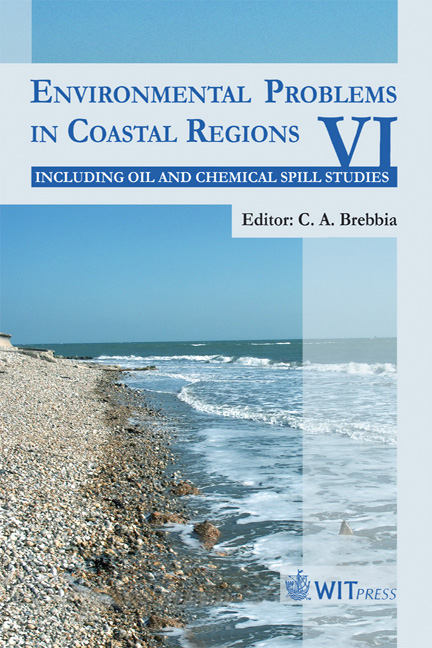Neural Network Prediction Of The Low-frequency Coastal Sea Level Response Using Conventional And NECP/NCAR Reanalysis Data
Price
Free (open access)
Transaction
Volume
88
Pages
10
Published
2006
Size
960 kb
Paper DOI
10.2495/CENV060321
Copyright
WIT Press
Author(s)
M. M. F. Oliveira N. F. F. Ebecken, L. P. Caloba, I. A. Santos & J. L. F. Oliveira3
Abstract
This paper presents a study about the variations of the coastal sea level in Paranaguá Bay-Paraná State, South Region of Brazil (SRB) from January 1997 to December 1998. Tidal forcing is the main cause of this variability, but the effects of meteorological variables are also present in the rising and lowering of the observed sea level. Hourly time series of the water level, atmospheric pressure and wind from the gauge tide and meteorological conventional stations were used. The Reanalysis data set of the \“National Centers for Environmental Prediction” (NCEP) and the \“National Center Atmospheric Research” (NCAR), on some points over the oceanic area near the bay were also used. The meteorological influences present in the original tide gauge records were extracted using a low-pass filter removing the oscillations with periods relative to the astronomical tide patterns. Meteorological time series were also filtered. Local and remote atmospheric driving forces were studied using statistical analysis on time and frequency domains. Therefore, the correlations in this physical process were defined to know the lag time between the meteorological variables and the coastal sea level response to the occurrences of the low frequency atmospheric systems. The NCEP/NCAR Reanalysis data translated better with the low frequency atmospheric phenomena variations showing that they are a very good information source for the South Atlantic Ocean (SAO) region where the lack of data is still substantial. Keywords: Artificial Neural Network, coastal sea level variability, meteorological tide (Surge), time series forecasting, NCEP/NCAR Reanalysis data.
Keywords
Artificial Neural Network, coastal sea level variability, meteorological tide (Surge), time series forecasting, NCEP/NCAR Reanalysis data.





